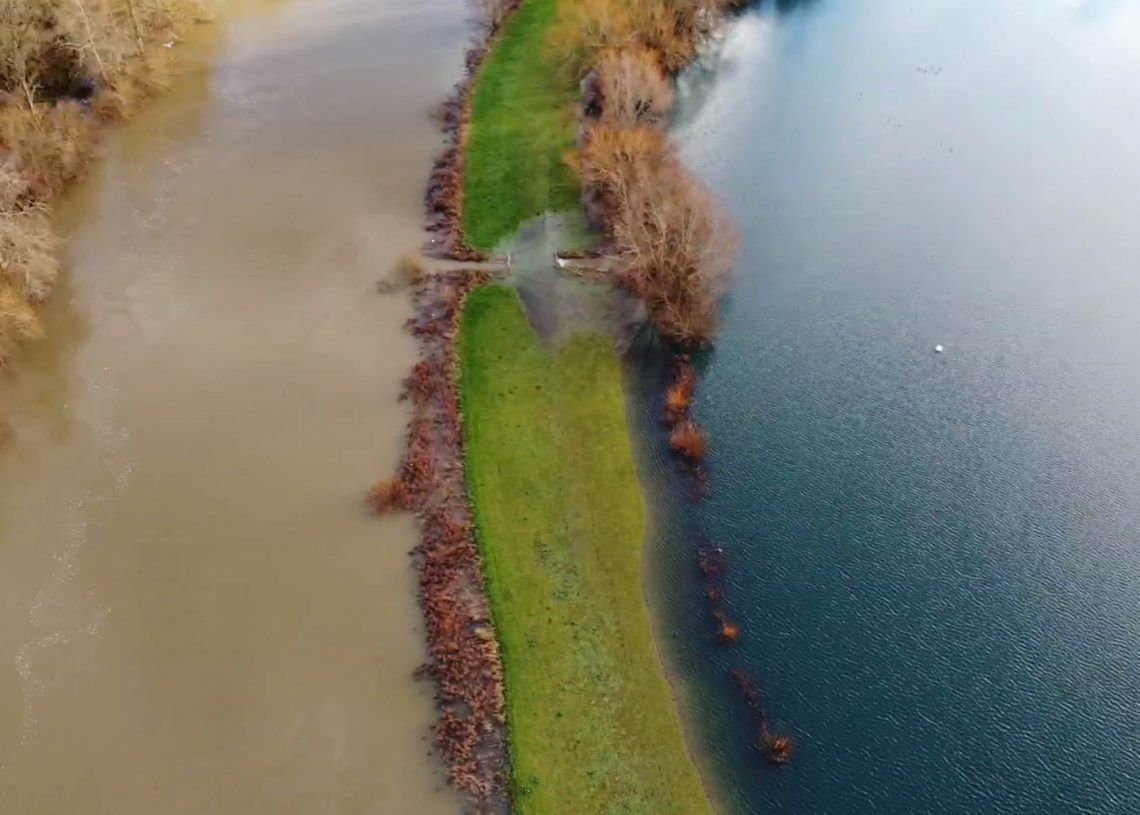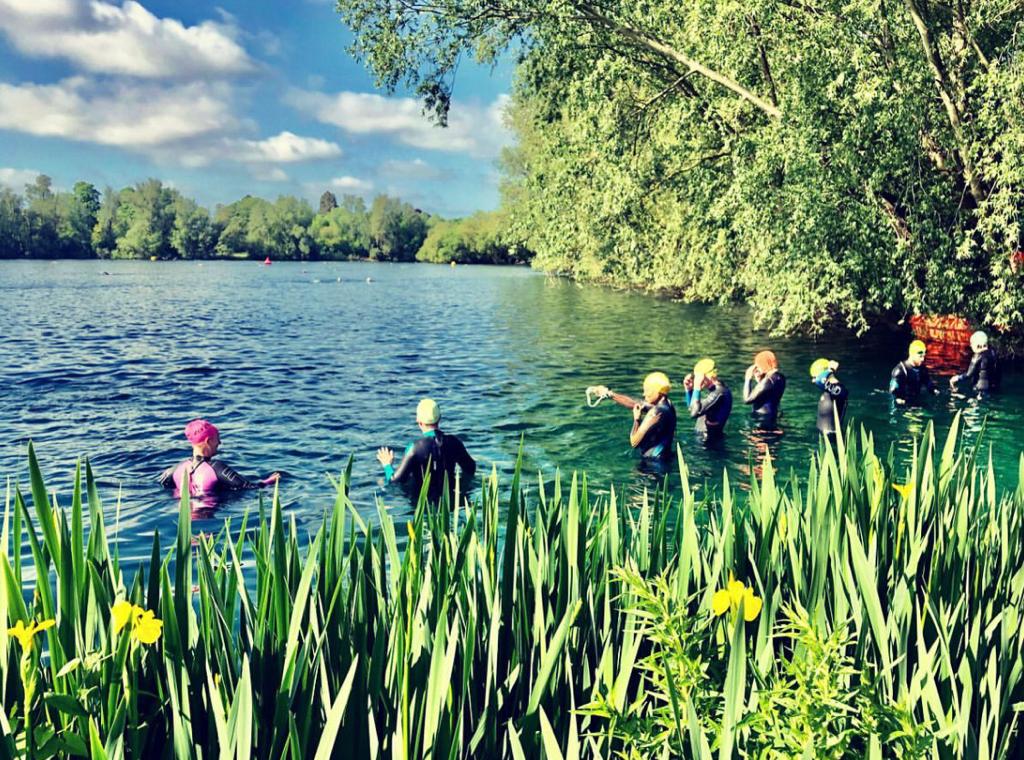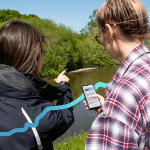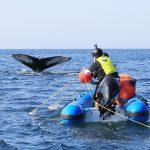
Save Shepperton Open Water Swim
A community of swimmers are appealing for help to prevent the River Thames Scheme from flowing into Shepperton Open Water Swimming Lake in Surrey.
Swimmers are asking the Government to halt the Spelthorne Channel of the River Thames Scheme (river water contaminated by passing routed through three landfill sites) from flowing into Shepperton Open Water Swimming Lake in Surrey.
The River Thames Scheme flood relief channel has been designed and consultation to change the route is nearly closed. Campaigners argue that the proposed route would destroy the swimming lake, by digging channels into and out of the lake but also by creating a continual flow of River Thames water into the safe and clean lake.
We spoke to the campaign team about the impact the proposed flood relief channel would have on the swimming community and why they are fighting to protect this very special place.
If the proposed flood relief channel was to go ahead, what would be the impact on the lake and the environment?
The proposal to cut a channel through the lake raises significant concerns about the potential dangers it poses to the environment and public health. While the River Thames Scheme may have justifications for such a project, it is crucial to consider the adverse consequences that could arise from the introduction of river water, river species, sewage and pollutants into the lake.
Cutting a channel through our lake would disrupt the delicate ecosystem that has developed over time. Lakes are home to diverse flora and fauna, and this interdependence can be severely affected by the influx of high volumes of river water. Reed beds would not be able to support filtration at that volume. The introduction of pollutants would lead to oxygen depletion, algal blooms and the decline of aquatic life, endangering fish populations and other wildlife in the area.
What would this mean for swimmers?
The construction of a flood relief channel through the lake would bring significant changes and challenges for open water swimmers and the business and micro businesses that operate there. It could disrupt swimming routes, raise water quality concerns, present safety hazards, disrupt community activities and diminish the natural beauty and serenity that attract swimmers to the lake. Careful consideration of alternative flood management strategies that mitigate these impacts should be considered.
Open water swimmers often rely on the natural configuration of the lake for their swimming routes. The construction of a flood relief channel would alter the lake’s structure and flow patterns, potentially obstructing or eliminating existing swimming routes. Swimmers may have to navigate around the channel, resulting in changes to their swimming experience and limiting their access to certain areas of the lake.

There are also water quality concerns. The introduction of a flood relief channel increases the risk of water pollution, as floodwaters can carry contaminants into the lake. This raises concerns about the water quality for open water swimmers. Pollutants such as sediment, chemicals and potential sewage can pose health risks and make swimming in the lake unsafe. Swimmers may have to closely monitor water quality reports and potentially limit or cease their swimming activities if the water becomes polluted.
Then there’s the potential of safety hazards. The construction process itself may present safety hazards for open water swimmers. Excavation, dredging and other activities associated with creating the flood relief channel can introduce submerged objects, debris or unstable conditions in the water. These hazards can pose risks to swimmers, leading to injuries or accidents.
There might also be a potential disruption of community and events. Lakes often serve as popular gathering spots for open water swimming communities and host various swimming events and competitions. The construction of a flood relief channel could disrupt these community activities and events, as the lake’s configuration and accessibility may change. Swimmers may need to find alternative locations or adapt their activities, impacting the sense of community and camaraderie that open water swimming at Ferris Meadow (Shepperton Open Water) offers.
Finally, there’s the loss of natural beauty and serenity. Open water swimmers are drawn to the tranquillity and natural beauty of lakes for mental health and wellbeing, not just for sport and competition. The construction of a flood relief channel may alter the landscape and visual aesthetics of the lake, potentially diminishing its appeal for swimmers seeking a serene and picturesque environment. The presence of the channel and associated construction activities could detract from the overall experience of open water swimming.
What alternatives are there for the proposed route?
We know that the Environment Agency have never looked at any other routes to be considered. We can’t really answer exactly what the alternatives would be, however, we are aware of alternative bodies of water that link to the proposed route that flow around the lake. We ask, could this be a solution to stop the river entering the lake but still offering support to the scheme? We ask that the Environment Agency look into the suggestions being presented to them.
What does this lake mean to the owners and their family?
Firstly, the family reaches out further than the bloodline, the swimmers are family and a massive community to us. The campaign has been launched by them in support of their lake and us. Ferris Meadow Lake has been in the family for Emma’s lifetime. It was originally a meadow and dug for gravel in the 1960s for which the family won an award for the restoration of the site. Following 40 years as a gravel business the pit was left to form a natural water habitat. It is now an SNCI (Site of Nature Conservation).
In 2010, open water swimming started at the site and offered a safe water haven for Elite Clubs and Junior British Swim Squads to train to compete; some Olympic hopefuls swim there now. It provides a space for mental health and wellbeing for all swimmers, a place to learn swim skills and even supports rehabilitation for some after major accident and amputation.
It continually amazes us how emotionally attached people that use the lake are. We do know and understand why – it is because they know they are looked after and cared for, we want to continue to give them that security.

What can readers do to help?
Readers can support by signing the petition. Please kindly share it with your neighbourly WhatsApp groups, friends, family and networks. You can also keep updated on the Save the Lake campaign via Twitter, Facebook and Instagram @saveourlake. Should anyone want to get in touch with the campaign directly you can email savethelakesows@gmail.com. On behalf of the lake and its community we thank you for your support.
Answers supplied by Emma Jackson (Campaign Coordinator), Ioan Smith (Campaign Support) and Emma Pattinson (Lake Owner).
Photographs supplied by Jane Hobbs and Shepperton Open Water Swim. The lead photo shows the River Thames beside the lake.








